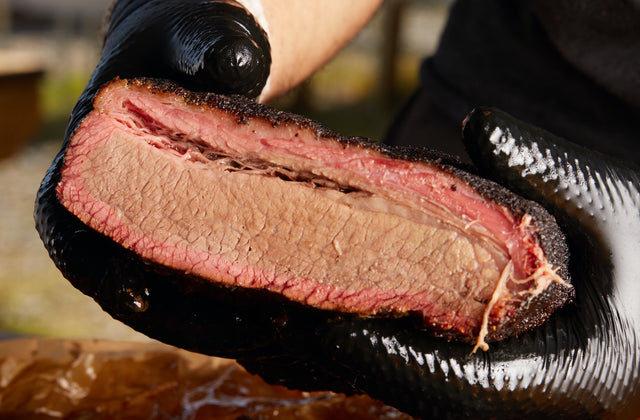A paleo diet is an approach to eating based on Paleolithic nutrition or the hunter-gatherer diet that mimics the nutrition of our ancestral past more than 2.5 million years ago. In those times, farming and cultivation didn’t exist, so people hunted, and gathered wild plants, and berries for food. The paleo diet consists of whole foods, lean proteins, nutrient-dense veggies, wild-caught fish, fruits, nuts, and seeds. It focuses on how humans ate in the past, without processed foods, cultivated grains, and refined carbohydrates. We’re going to give you all the information you need, to learn about the paleo diet benefits to guide you so you can decide if this type of nutrition protocol is right for you.
What Is The Paleo Diet
Over the last one-hundred years, industrialization and urbanization have increased the availability of low cost, highly processed convenient foods. While essential for human advancement, it has come with a high cost to our health, with a consequence of chronic disease such as obesity, hypertension, diabetes, and heart disease [R].
Since 1960, U.S. obesity rates have increased from 13% to 32% in 2004 and are estimated to increase to 38% by the year 2030 [R]. As the prevalence of obesity increases, there will be an equal increase in chronic disease and mortality rates.
The Paleolithic diet was first introduced in the 1970’s and became immensely popular in the early 2000’s. The paleo diet consists of foods based on the way humans ate during the paleolithic era, such as lean meat, fish, vegetables, nuts, fruit, and seeds.
There are several arguments which exist regarding the specifics of the paleo diet such as what foods were actually available during that time amongst different regions. There is also debate in choosing lower glycemic foods rather than higher glycemic foods. For example, white potatoes did in fact exist during the Paleolithic era, however they are avoided by some who follow the paleo diet because of their high glycemic rating. Overall, the diet is high in protein, moderate in fat, and low in carbohydrates.
Paleo Diet Benefits
Eliminates Highly Processed Foods
The paleo diet can be extremely beneficial to your overall health, but eliminating highly processed foods, full of refined sugar and little to no nutritional value. The paleo diet focuses on grass-fed proteins, healthy fats, and whole foods which have more nutritional value, vitamins, minerals, and fiber to improve overall health.
Processed foods contain hidden sugars, added salt, and unhealthy trans fats. Eliminating or limiting processed and packaged foods, will reduce inflammation, maintain blood sugar, and improve weight loss.
May Help Weight Loss
The purpose of a diet is to optimize health, wellness, and body composition. Though diets work for a short period of time, most are not feasible or sustainable long term. Paleo however provides general guidelines and more flexibility than other diets. We’ll use potatoes again as an example. Some who follow the paleo diet, do not eat potatoes, yet others do eat potatoes considering they were present in the Paleolithic era. Proponents of the diet, also limit dairy, yet others argue that some dairy is acceptable. Therefore, following the paleo diet, could in fact promote a sustainable lifestyle change as opposed to other diet plans.
The paleo diet, follows a macro nutrients protocol, consisting of roughly 30% protein, 40% fat, and 30% carbohydrates. A study published in the Journal Of Clinical Nutrition investigated the effects of a Paleolithic-type diet (PD) on body weight and metabolic balance. 70 obese women were assigned to a paleo diet or Nordic nutrition recommendations which includes foods similar to the paleo diet, yet daily macronutrients were different providing less protein and fat but more carbohydrates with 15% protein, 25-30% fat, and 55-60% carbohydrates.
Both groups significantly lost body fat at 6 months, yet the paleo diet produced a significantly greater loss in total weight lost [R].
Provides Healthy Fats
One of the benefits of the paleo diet, is that it’s robust with healthy fats such as omega-3, and alpha-linolenic acid (ALA), a precursor to EPA and DHA. Healthy fats are essential for proper biological processing, and brain function. Paleo encourages food free of preservatives and organic in nature, recommending grass-fed beef, wild caught fish, and organic poultry. Although only a small portion of ALA can be converted into long-chain omega-3 fatty acids, cooked salmon contains 1000-2000 mg of EPA/DHA per 3-ounce portion, whereas 3 ounces of grass-fed beef contains about 20-200 mg of ALA.
Paleo Diet Foods And Guidelines
Paleo diet foods must be organic, grass-fed, and organic. Although eating foods organic in nature can be extremely healthy, it can get a bit pricey.

Paleo Diet Foods You Can Eat
Grass fed beef, free range pork, chicken, lamb, venison, bison, turkey, shellfish, eggs, nuts, seeds, wild caught fish, mackerels, vegetables, fruit, olive oil, coconut oil, flaxseed oil, avocado oil, sweet potatoes and yams (in moderation) and small amounts of honey.
Paleo Diet Foods You Can’t Eat
Whole grains, rye, rice, barley, cereals, dairy, yogurt, cheese, refined grains, sugar, high glycemic fruits, starchy vegetables, legumes like beans, peanuts, and peas, alcohol, coffee, salt, canola oil, refined sugars, sweeteners, and most processed foods in general
No calorie counting, no portion size recommendations, just follow your gut.
RELATED ARTICLE 5 Proven Health Benefits Of Omega-3 Fats
Paleo Diet: Takeaway
Arguably, any diet is sustainable if you can follow the guidelines. However, eliminating foods, counting calories, and depriving yourself of the foods you enjoy, will not work. Excluding foods such as wheat, and dairy can increase the risk and likelihood of deficiencies in valuable vitamins and nutrients such as calcium, vitamin d, fiber, and b vitamins if these foods are eliminated and not supplemented for. Following a nutrition plan which includes a variety of healthy fats, lean proteins, and complex carbohydrates, will improve overall health and wellness. And include the foods you love in moderation, so you ultimately don’t set yourself up for failure. Overall the paleo diet is better than most, considering that it encourages whole foods, nutrient dense greens, and healthy fats. Again, the restrictive nature will make this diet hard to follow and challenging. If you are up to the challenge, refresh this page to get your free paleo meal plan download.
Need Help With Optimizing Your Diet And Nutrition Plan To Finally Get The Results You've Been Waiting For?
SWOLVERINE IS AN ENDURANCE ATHLETE AND ACTIVE LIFESTYLE BRAND. MADE FOR THE ELITE ATHLETE, AND THE STRONG-WILLED OUR PRODUCTS WERE DESIGNED TO FUEL YOUR ATHLETIC PERFORMANCE. WE PERFORM WHEN YOU PERFORM.
We believe that everyone can optimize not only their athletic performance but their human potential. The way we believe we can optimize performance is through transparency, clinically effective doses, and clinically proven ingredients with evidence-based outcomes. We provide the nutrients you need to power your active lifestyle.
References
Challa HJ, Bandlamudi M, Uppaluri KR. Paleolithic Diet. [Updated 2021 Aug 1]. In: StatPearls [Internet]. Treasure Island (FL): StatPearls Publishing; 2021 Jan-. Available from: https://www.ncbi.nlm.nih.gov/books/NBK482457/
Hruby, Adela, and Frank B Hu. “The Epidemiology of Obesity: A Big Picture.” PharmacoEconomics vol. 33,7 (2015): 673-89. doi:10.1007/s40273-014-0243-x
Eric W Manheimer, Esther J van Zuuren, Zbys Fedorowicz, Hanno Pijl, Paleolithic nutrition for metabolic syndrome: systematic review and meta-analysis, The American Journal of Clinical Nutrition, Volume 102, Issue 4, October 2015, Pages 922–932, https://doi.org/10.3945/ajcn.115.113613
Mellberg, C et al. “Long-term effects of a Palaeolithic-type diet in obese postmenopausal women: a 2-year randomized trial.” European journal of clinical nutrition vol. 68,3 (2014): 350-7. doi:10.1038/ejcn.2013.290
Find similar articles:
Nutrition







